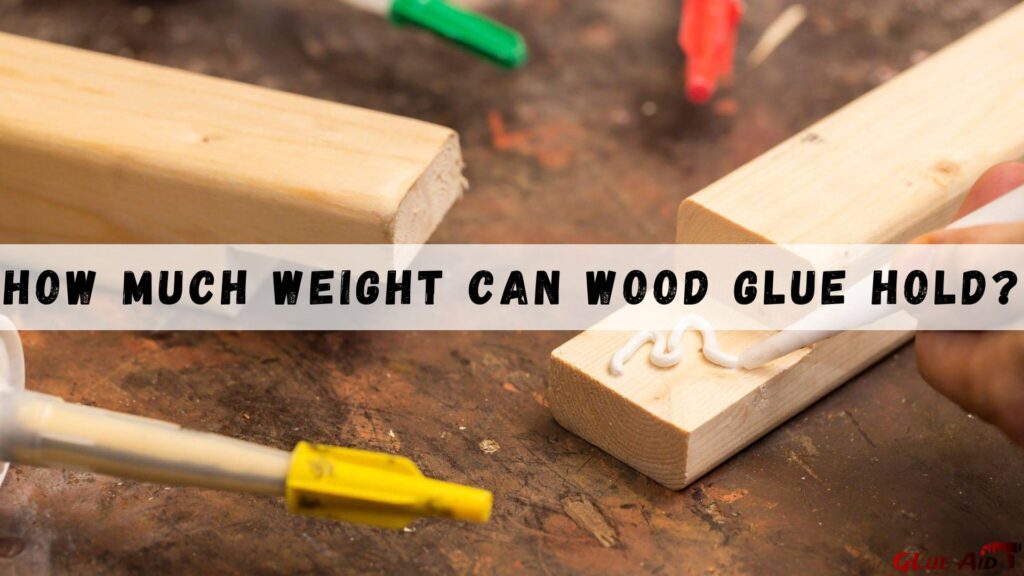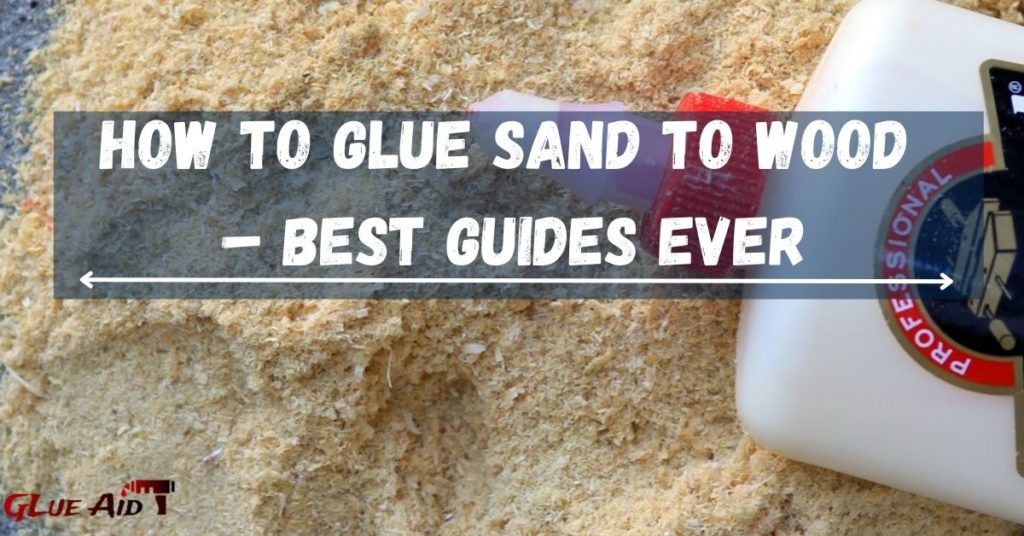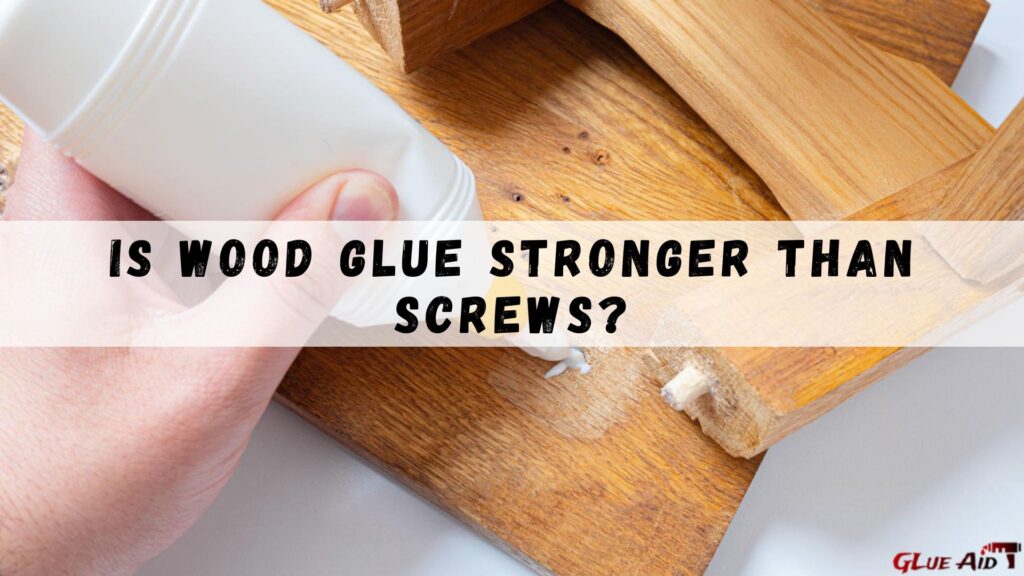Did you know how much weight can wood glue hold? In fact, it can hold more weight than you might think. This means that if you are looking for a strong and durable way to join two pieces of wood together, wood glue is a great option. Keep reading to learn more about how much weight wood glue can hold.
Table of Contents
How Much Weight Can Wood Glue Hold?
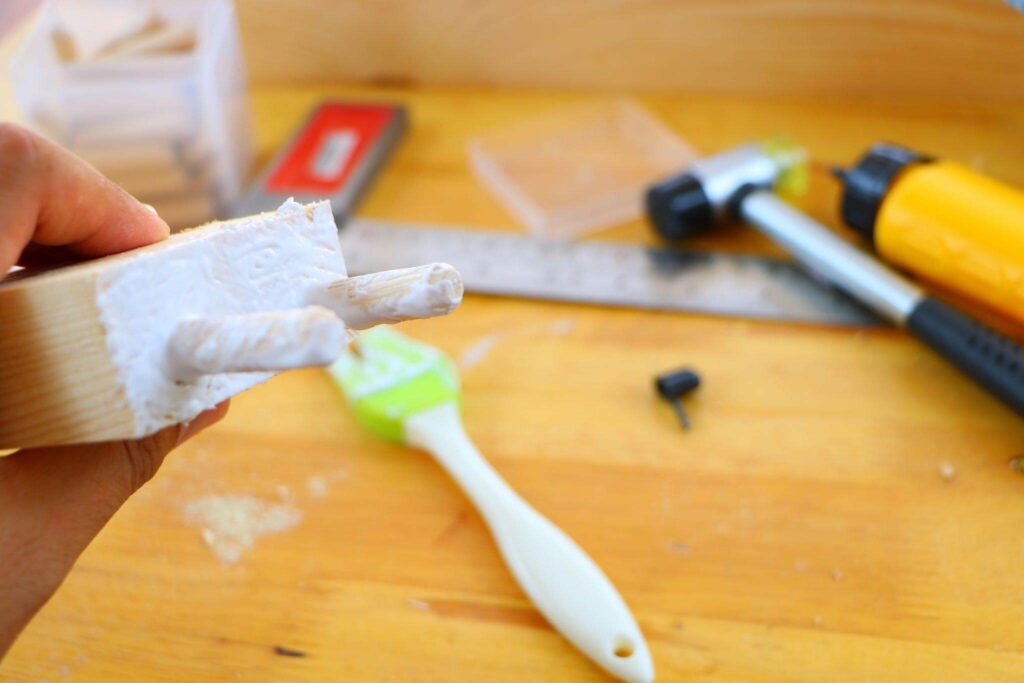
When it comes to woodworking projects, one of the most important considerations is the strength of the joints used to hold the project together. Wood glue is a commonly used adhesive for creating strong, long-lasting joints, but how much weight can it really hold?
One of the strongest types of wood glue is polyurethane glue, which is known for its excellent bonding strength and water resistance. When used properly, a joint glued with polyurethane glue can hold over 2,000 pounds per square inch.
Other types of wood glue, such as PVA (polyvinyl acetate) glue, are also strong, but may not be as durable as polyurethane glue. PVA glue is a good choice for general woodworking projects, but may not be suitable for use in outdoor or high-moisture environments.
It’s important to note that wood glue should not be used as a standalone fastening method for heavy loads. It should always be used in conjunction with mechanical fasteners, such as nails or screws, to ensure the structural integrity of the joint.
In addition to the type of glue being used, the amount of glue applied also plays a role in the strength of the joint. It’s generally recommended to apply a generous amount of glue to the joint, making sure to coat both surfaces evenly. However, it’s important not to use too much glue, as excess glue can squeeze out of the joint and weaken the bond.
The surface area of the joint is another important factor to consider. A joint with a larger surface area will typically be stronger than a joint with a smaller surface area. This is because the glue has more contact points to bond to, resulting in a stronger overall connection.
The conditions under which the glue is being used can also affect its strength. Wood glue is most effective when used at room temperature and in a dry environment. Excessive heat or moisture can weaken the bond, reducing the amount of weight the joint can hold.
Wood Strength Table
| Tree Species | Average Specific Gravity, Oven Dry Sample | Static Bending Modulus of Elasticity (E) | Impact Bending, Height of Drop Causing Failure | Compress. Per pen. to Grain, Fiber Stress at Prop. Limit | Compress. Parallel to Grain, Max Crushing Strength | Shear Parallel to Grain, Max Shear Strength |
| (0-1.0) | 10^6 psi | inches | psi | psi | psi | |
| U. S. Hardwoods | ||||||
| Alder, Red | 0.41 | 1.38 | 20 | 440 | 5,820 | 1,080 |
| Ash, Black | 0.49 | 1.6 | 35 | 760 | 5,970 | 1,570 |
| Ash, Blue | 0.58 | 1.4 | – | 1,420 | 6,980 | 2,030 |
| Ash, Green | 0.56 | 1.66 | 32 | 1,310 | 7,080 | 1,910 |
| Ash, Oregon | 0.55 | 1.36 | 33 | 1,250 | 6,040 | 1,790 |
| Ash, White | 0.6 | 1.74 | 43 | 1,160 | 7,410 | 1,910 |
| Aspen, Bigtooth | 0.39 | 1.43 | – | 450 | 5,300 | 1,080 |
| Aspen, Quaking | 0.38 | 1.18 | 21 | 370 | 4,250 | 850 |
| Basswood | 0.37 | 1.46 | 16 | 370 | 4,730 | 990 |
| Beech, American | 0.64 | 1.72 | 41 | 1,010 | 7,300 | 2,010 |
| Birch, Paper | 0.55 | 1.59 | 34 | 600 | 5,690 | 1,210 |
| Birch, Sweet | 0.65 | 2.17 | 47 | 1,080 | 8,540 | 2,240 |
| Birch, Yellow | 0.62 | 2.01 | 55 | 970 | 8,170 | 1,880 |
| Butternut | 0.38 | 1.18 | 24 | 460 | 5,110 | 1,170 |
| Cherry, Black | 0.5 | 1.49 | 29 | 690 | 7,110 | 1,700 |
| Chestnut, American | 0.43 | 1.23 | 19 | 620 | 5,320 | 1,080 |
| Cottonwood, Balsam Poplar | 0.34 | 1.1 | – | 300 | 4,020 | 790 |
| Cottonwood, Black | 0.35 | 1.27 | 22 | 300 | 4,500 | 1,040 |
| Elm, Eastern | 0.4 | 1.37 | 20 | 380 | 4,910 | 930 |
| Elm, American | 0.5 | 1.34 | 39 | 690 | 5,520 | 1,510 |
| Elm, Rock | 0.63 | 1.54 | 56 | 1,230 | 7,050 | 1,920 |
| Elm, Slippery | 0.53 | 1.49 | 45 | 820 | 6,360 | 1,630 |
| Hackberry | 0.53 | 1.19 | 43 | 890 | 5,440 | 1,590 |
| Hickory, Bitternut | 0.66 | 1.79 | 66 | 1,680 | 9,040 | – |
| Hickory, Nutmeg | 0.6 | 1.7 | – | 1,570 | 6,910 | – |
| Hickory, Pecan | 0.66 | 1.73 | 44 | 1,720 | 7,850 | 2,080 |
| Hickory, Water | 0.62 | 2.02 | 53 | 1,550 | 8,600 | – |
| Hickory, Mockernut | 0.72 | 2.22 | 77 | 1,730 | 8,940 | 1,740 |
| Hickory, Pignut | 0.75 | 2.26 | 74 | 1,980 | 9,190 | 2,150 |
| Hickory, Shagbark | 0.72 | 2.16 | 67 | 1,760 | 9,210 | 2,430 |
| Hickory, Shellbark | 0.69 | 1.89 | 88 | 1,800 | 8,000 | 2,110 |
| Honeylocust | – | 1.63 | 47 | 1,840 | 7,500 | 2,250 |
| Locust, Black | 0.69 | 2.05 | 57 | 1,830 | 10,180 | 2,480 |
| Magnolia,Cucumbertree | 0.48 | 1.82 | 35 | 570 | 6,310 | 1,340 |
| Magnolia, Southern | 0.5 | 1.4 | 29 | 860 | 5,460 | 1,530 |
| Maple, Bigleaf | 0.48 | 1.45 | 28 | 750 | 5,950 | 1,730 |
| Maple, Black | 0.57 | 1.62 | 40 | 1,020 | 6,680 | 1,820 |
| Maple, Red | 0.54 | 1.64 | 32 | 1,000 | 6,540 | 1,850 |
| Maple, Silver | 0.47 | 1.14 | 25 | 740 | 5,220 | 1,480 |
| Maple, Sugar | 0.63 | 1.83 | 39 | 1,470 | 7,830 | 2,330 |
| Oak, Black | 0.61 | 1.64 | 41 | 930 | 6,520 | 1,910 |
| Oak, Cherrybark | 0.68 | 2.28 | 49 | 1,250 | 8,740 | 2,000 |
| Oak, Laurel | 0.63 | 1.69 | 39 | 1,060 | 6,980 | 1,830 |
| Oak, Northern Red | 0.63 | 1.82 | 43 | 1,010 | 6,760 | 1,780 |
| Oak, Pin | 0.63 | 1.73 | 45 | 1,020 | 6,820 | 2,080 |
| Oak, Scarlet | 0.67 | 1.91 | 53 | 1,120 | 8,330 | 1,890 |
| Oak, Southern Red | 0.59 | 1.49 | 26 | 870 | 6,090 | 1,390 |
| Oak, Water | 0.63 | 2.02 | 44 | 1,020 | 6,770 | 2,020 |
| Oak, Willow | 0.69 | 1.9 | 42 | 1,130 | 7,040 | 1,650 |
| Oak, Bur | 0.64 | 1.03 | 29 | 1,200 | 6,060 | 1,820 |
| Oak, Chestnut | 0.66 | 1.59 | 40 | 840 | 6,830 | 1,490 |
| Oak, Live | 0.88 | 1.98 | – | 2,840 | 8,900 | 2,660 |
| Oak, Overcup | 0.63 | 1.42 | 38 | 810 | 6,200 | 2,000 |
| Oak, Post | 0.67 | 1.51 | 46 | 1,430 | 6,600 | 1,840 |
| Oak, Swamp Chestnut | 0.67 | 1.77 | 41 | 1,110 | 7,270 | 1,990 |
| Oak, Swamp White | 0.72 | 2.05 | 49 | 1,190 | 8,600 | 2,000 |
| Oak, White | 0.68 | 1.78 | 37 | 1,070 | 7,440 | 2,000 |
| Sassafras | 0.46 | 1.12 | – | 850 | 4,760 | 1,240 |
| Sweetgum | 0.52 | 1.64 | 32 | 620 | 6,320 | 1,600 |
| Sycamore, American | 0.49 | 1.42 | 26 | 700 | 5,380 | 1,470 |
| Tupelo, Black | 0.5 | 1.2 | 22 | 930 | 5,520 | 1,340 |
| Tupelo, Water | 0.5 | 1.26 | 23 | 870 | 5,920 | 1,590 |
| Walnut, Black | 0.55 | 1.68 | 34 | 1,010 | 7,580 | 1,370 |
| Willow, Black | 0.39 | 1.01 | – | 430 | 4,100 | 1,250 |
| Yellow-poplar | 0.42 | 1.58 | 24 | 500 | 5,540 | 1,190 |
| U. S. Softwoods | ||||||
| Baldcypress | 0.46 | 1.44 | 24 | 730 | 6,360 | 1,000 |
| Cedar, Alaska | 0.44 | 1.42 | 29 | 620 | 6,310 | 1,130 |
| Cedar, Atlantic White | 0.32 | 0.93 | 13 | 410 | 4,700 | 800 |
| Cedar, Eastern Redcedar | 0.47 | 0.88 | 22 | 920 | 6,020 | – |
| Cedar, Incense | 0.37 | 1.04 | 17 | 590 | 5,200 | 880 |
| Cedar, Northern White | 0.31 | 0.8 | 12 | 310 | 3,960 | 850 |
| Cedar, Port-Orford | 0.43 | 1.7 | 28 | 720 | 6,250 | 1,370 |
| Cedar, Western Redcedar | 0.32 | 1.11 | 17 | 460 | 4,560 | 990 |
| Douglas-fir, Coast | 0.48 | 1.95 | 31 | 800 | 7,230 | 1,130 |
| Douglas-fir, Interior West | 0.5 | 1.83 | 32 | 760 | 7,430 | 1,290 |
| Douglas-fir, Interior North | 0.48 | 1.79 | 26 | 770 | 6,900 | 1,400 |
| Douglas-fir, Interior South | 0.46 | 1.49 | 20 | 740 | 6,230 | 1,510 |
| Fir, Balsam | 0.35 | 1.45 | 20 | 404 | 5,280 | 944 |
| Fir, California Red | 0.38 | 1.5 | 24 | 610 | 5,460 | 1,040 |
| Fir, Grand | 0.37 | 1.57 | 28 | 500 | 5,290 | 900 |
| Fir, Noble | 0.39 | 1.72 | 23 | 520 | 6,100 | 1,050 |
| Fir, Pacific silver | 0.43 | 1.76 | 24 | 450 | 6,410 | 1,220 |
| Fir, Subalpine | 0.32 | 1.29 | – | 390 | 4,860 | 1,070 |
| Fir, White | 0.39 | 1.5 | 20 | 530 | 5,800 | 1,100 |
| Hemlock, Eastern | 0.4 | 1.2 | 21 | 650 | 5,410 | 1,060 |
| Hemlock, Mountain | 0.45 | 1.33 | 32 | 860 | 6,440 | 1,540 |
| Hemlock, Western | 0.45 | 1.63 | 23 | 550 | 7,200 | 1,290 |
| Larch, western | 0.52 | 1.87 | 35 | 930 | 7,620 | 1,360 |
| Pine, Eastern white | 0.35 | 1.24 | 18 | 440 | 4,800 | 900 |
| Pine, Jack | 0.43 | 1.35 | 27 | 580 | 5,660 | 1,170 |
| Pine, Loblolly | 0.51 | 1.79 | 30 | 790 | 7,130 | 1,390 |
| Pine, Lodgepole | 0.41 | 1.34 | 20 | 610 | 5,370 | 880 |
| Pine, Longleaf | 0.59 | 1.98 | 34 | 960 | 8,470 | 1,510 |
| Pine, Pitch | 0.52 | 1.43 | – | 820 | 5,940 | 1,360 |
| Pine, Pond | 0.56 | 1.75 | – | 910 | 7,540 | 1,380 |
| Pine, Ponderosa | 0.4 | 1.29 | 19 | 580 | 5,320 | 1,130 |
| Pine, Red | 0.46 | 1.63 | 26 | 600 | 6,070 | 1,210 |
| Pine, Sand | 0.48 | 1.41 | – | 836 | 6,920 | – |
| Pine, Shortleaf | 0.51 | 1.75 | 33 | 820 | 7,270 | 1,390 |
| Pine, Slash | 0.59 | 1.98 | – | 1,020 | 8,140 | 1,680 |
| Pine, Spruce | 0.44 | 1.23 | – | 730 | 5,650 | 1,490 |
| Pine, Sugar | 0.36 | 1.19 | 18 | 500 | 4,460 | 1,130 |
| Pine, Virginia | 0.48 | 1.52 | 32 | 910 | 6,710 | 1,350 |
| Pine, Western white | 0.38 | 1.46 | 23 | 470 | 5,040 | 1,040 |
| Redwood, Old-growth | 0.4 | 1.34 | 19 | 700 | 6,150 | 940 |
| Redwood, Young-growth | 0.35 | 1.1 | 15 | 520 | 5,220 | 1,110 |
| Spruce, Black | 0.42 | 1.61 | 23 | 550 | 5,960 | 1,230 |
| Spruce, Engelmann | 0.35 | 1.3 | 18 | 410 | 4,480 | 1,200 |
| Spruce, Red | 0.4 | 1.61 | 25 | 550 | 5,540 | 1,290 |
| Spruce, Sitka | 0.4 | 1.57 | 25 | 580 | 5,610 | 1,150 |
| Spruce, White | 0.36 | 1.43 | 20 | 430 | 5,180 | 970 |
| Tamarack | 0.53 | 1.64 | 23 | 800 | 7,160 | 1,280 |
How Much Stress Can You Put On Wood Glue?
Not only does the wood’s strength play a role in how much weight it can support, but the type of glue used is also instrumental.
This table shows how various popular wood types of glue rank in terms of stress and strength. The three fields are Name, Type, and Strength.
Wood Strength Table:
| Type | Wood Name | Strength (Shear parallel to grain) |
| Softwood | Cedar (Northern White) | 850 psi |
| Softwood | Cedar (Western Red) | 990 psi |
| Softwood | Fir (California Red) | 1,040 psi |
| Softwood | Fir (Grand) | 900 psi |
| Softwood | Fir (Noble) | 1,050 psi |
| Softwood | Hemlock (Eastern) | 1,060 psi |
| Softwood | Hemlock (Western) | 1,290 psi |
| Softwood | Hemlock (Mountain) | 1,540 psi |
| Softwood | Pine (Eastern White) | 900 psi |
| Softwood | Pine (Western White) | 1,040 psi |
| Softwood | Pine (Sugar) | 1,130 psi |
| Softwood | Pine (Ponderosa) | 1,130 psi |
| Hardwood | Ash (White) | 1,910 psi |
| Hardwood | Ash (Green) | 1,910 psi |
| Hardwood | Ash (Black) | 1570 psi |
| Hardwood | Cherry (Black) | 1,700 psi |
| Hardwood | Chestnut (American) | 1,080 psi |
| Hardwood | Elm (American) | 1,510 psi |
| Hardwood | Elm (Slippery) | 1,630 psi |
| Hardwood | Elm (Rock) | 1,920 psi |
| Hardwood | Hickory (Shagbark) | 2,430 psi |
| Hardwood | Maple (Bigleaf) | 1,730 psi |
| Hardwood | Maple (Red) | 1,850 psi |
| Hardwood | Maple (Sugar) | 2,330 psi |
| Hardwood | Mahogany (African) | 1,500 psi |
| Hardwood | Oak (Northern Red) | 1,780 psi |
| Hardwood | Oak (White) | 2,000 psi |
Glue Strength Table
| Type | Name | Strength |
| PVA | Titebond Quick & Thick | 3,000 psi |
| PVA | Titebond Original | 3,600 psi |
| PVA | Titebond II Premium | 3,750 psi |
| PVA | Titebond III Ultimate | 4,000 psi |
| PVA | Titebond II Premium Dark | 3,750 psi |
| Polyurethane | Titebond Polyurethane | 3,510 psi |
| Natural Protein Solution | Titebond Liquid Hide | 3,590 psi |
| 2 Part Epoxy | Gorilla All-Purpose Epoxy Stick | 1,550 psi |
| 2 Part Epoxy | Gorilla Epoxy | 3,300 psi |
| 2 Part Epoxy | Gorillaweld | 4,250 psi |
Read Also: Does Wood Glue Work on Metal
The Different Attributes Which Determine the Strength of Wood Glue
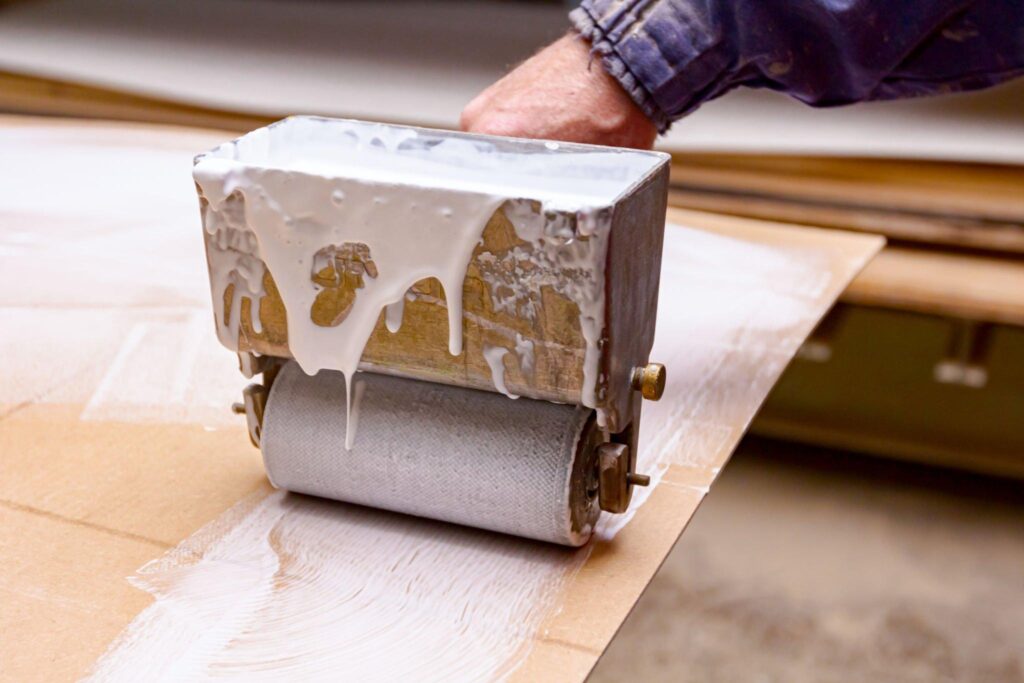
Even though wood glues have a high-strength rating, your actual bond might not be as strong. Ideally, we want to get the highest figure possible.
Below are some of the more crucial details. Keep in mind that this is not a complete list there are many other things to consider as well. There are many types of glue. These have different properties. What is true for one may not be true for another:
Type of Glue Used
Although wood glue comes in various strengths, it’s not always the best idea to use the strongest option. Depending on your project, other properties of the glue may be more important.
The majority of woodworkers opt for one of the PVA glues because they are easy to use and can be cleaned up with water. Some PVAs are stronger than others, some can only be used indoors, and some are more resistant to moisture than others.
Temperature
The temperature can have an impact on how strong the bond of your glue is. Make sure to follow what the manufacturer says for whatever kind of glue you’re using. You might need to heat up your garage during winter so that you can apply the glue at the right temperature.
Clean Surfaces
In order to create a strong bond, it is essential that the surfaces are clean. A simple wipe with a rag will often do the trick.
Porous Wood Surface
The end grain is the grain that appears at the end of boards. It usually results from crosscuts made perpendicular to the grain. So, when you need to join one board to another, you often come across the end grain.
Because the end grain is so porous, it can “soak up” the glue and create a weak bond. To avoid this, woodworkers often cut angles or put “fingers” into the end grain. This allows the glue to bond to less porous parts of the grain and creates a stronger joint.
If you’re looking for a stronger joint, another option is to use an angle bracket or metal plate along with glue.
Oily Wood
woods with higher oil, sap, and resin levels can often inhibit woodworking glues from working properly. When this happens, the joints are usually weaker. Some of the more oily woods include Oak, Maple, and Teak. When working with oily wood, it’s best to use glue that isn’t water-based. Two examples of such glues are polyurethane and 2-part epoxy.
FAQs About How Much Weight Can Wood Glue Hold?
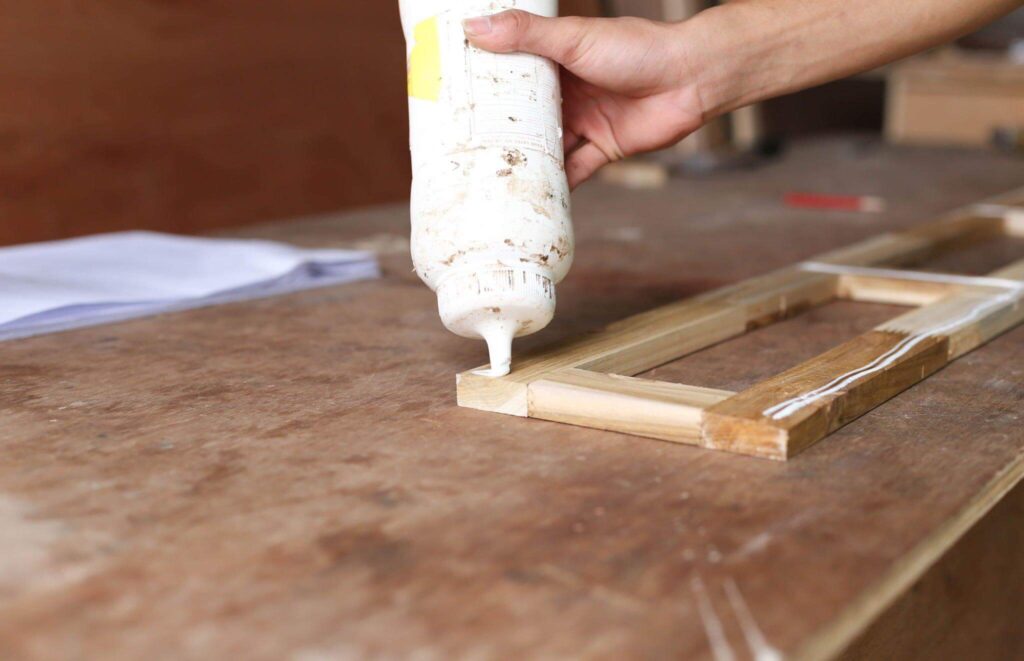
Is just wood glue strong enough?
No, wood glue should not be used as a standalone fastening method for heavy loads. It should always be used in conjunction with mechanical fasteners, such as nails or screws, to ensure the structural integrity of the joint.
Is wood glue stronger than screws?
When used in combination with wood glue, the joint created can be significantly stronger than a joint held together with screws alone.
Is wood glue strong enough for the furniture?
Yes, wood glue is strong enough for most furniture applications. However, it’s important to choose the right type of wood glue for the job.
Is wood glue as strong as wood?
No, wood glue is not as strong as the wood itself. However, when used properly, wood glue can create joints that are just as strong as the wood surrounding them.
Last Words
Wood glue is a powerful adhesive that can be used to create strong, long-lasting joints. The amount of weight that it can hold depends on a variety of factors, including the type of glue being used, the amount of glue applied, the surface area of the joint, and the conditions under which the glue is being used. However, it’s important to remember that wood glue should not be used as a standalone fastening method for heavy loads, and should always be used in conjunction with mechanical fasteners for maximum strength and stability.
Related Topics
